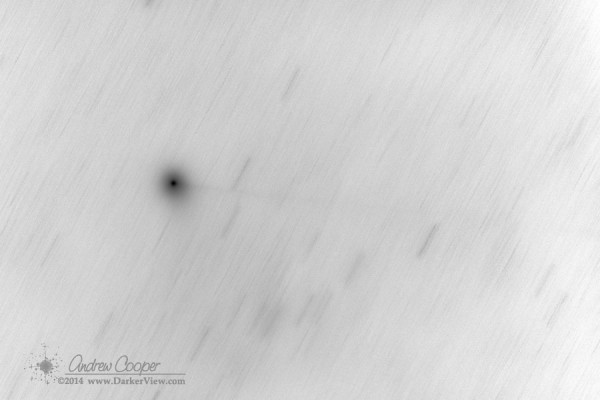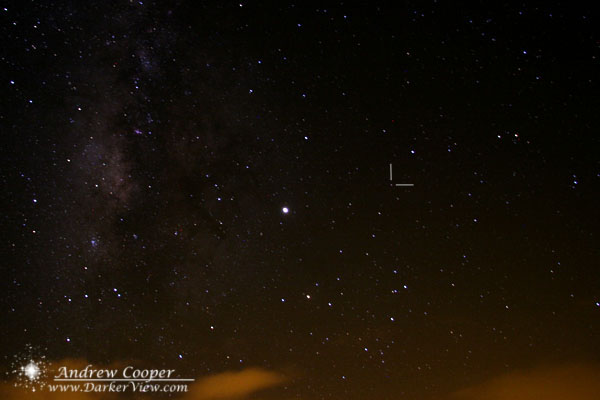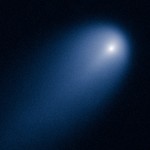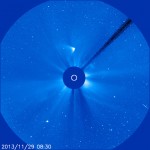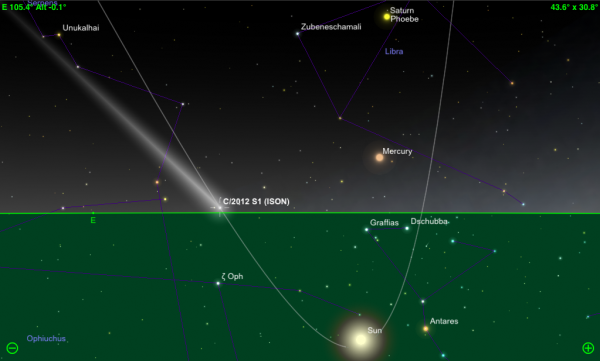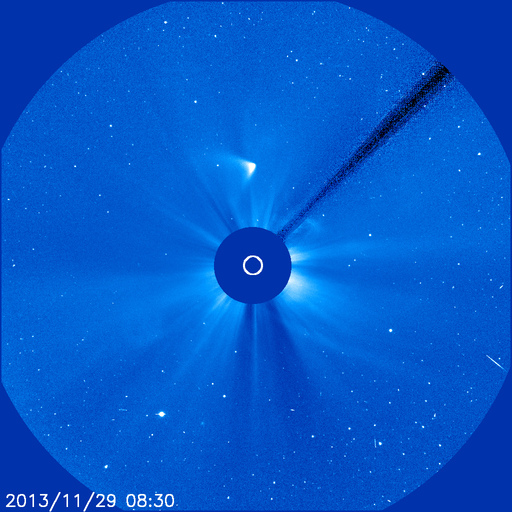The tails are faint!
I have talked to a couple folks who have observed the comet in mid-sized telescopes, 14 and 24 inch, instruments. One thing they note is the absence of any visual tails on this otherwise bright comet. In processing the imagery from last night I can see the tails, but only in a very strong stretch of the data.
Below is an inverted version of mostly the green channel. Both the ion tail and dust tail are visible, but they are truly subtle. The ion tail is visible as a streak going to the right in the image, quite thin and straight, extending well over three degrees. The dust tail is visible as a wide are below the coma in this image.
Still working to properly the process the full image, the data looks very good so far.
